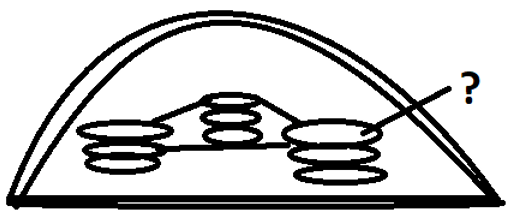This set of Class 11 Biology Chapter 8 Multiple Choice Questions & Answers (MCQs) focuses on “Cell The Unit of Life” for NEET Preparation.
1. Which of these organelles possess a single circular DNA molecule?
a) Golgi apparatus
b) Peroxisome
c) Lysosome
d) Mitochondria
View Answer
Explanation: Apart from the genomic DNA present inside the nucleus, the mitochondria possesses its own genetic material in the form of a single circular DNA molecule. This DNA codes for some mitochondrial proteins.
2. Where is 70S ribosome found in the animal cell?
a) Inside the nucleus
b) Surface of rough endoplasmic reticulum
c) Inside mitochondria
d) In the cytoplasm
View Answer
Explanation: Apart from the genomic DNA present inside the nucleus, the mitochondria possesses its own genetic material in the form of a single circular DNA molecule. It also possesses 70S (prokaryotic) ribosomes.
3. Which of these plastids store proteins?
a) Amyloplasts
b) Elaioplasts
c) Aleuroplasts
d) Chromoplasts
View Answer
Explanation: Chromoplasts impart colours to the different cells of a plant such as yellow colour of a flower or a fruit. Elaioplasts store oils and fats, amyloplasts store starch and aleuroplasts store proteins.
4. How many chloroplasts are present in each cell of Chlamydomonas?
a) 1
b) 2
c) 3
d) 4
View Answer
Explanation: Chloroplasts are plastids containing the green pigment chlorophyll, which is necessary to trap sunlight to carry out the process of photosynthesis. Chlamydomonas has only one chloroplast per cell.
5. Identify the part of the chloroplast.

a) Inner membrane
b) Thylakoid
c) Stroma
d) Lamella
View Answer
Explanation: Chloroplasts are plastids which contain the green pigment chlorophyll. The structure of the chloroplast shown in the diagram is the thylakoid, which is present on the stroma, stacked on top of each other.
6. Which structure of the chloroplast contains enzymes required for the synthesis of carbohydrates?
a) Lamellae
b) Grana
c) Stroma
d) Inner membrane
View Answer
Explanation: Chloroplasts are plastids which contain the green pigment chlorophyll. The stroma is the ground substance of the chloroplast. It contains enzymes which are required for the synthesis of carbohydrates and proteins.
7. Which of these statements is not true about ribosomes?
a) They are bound by a single membrane
b) They are composed of RNA and proteins
c) They were first observed by George Palade
d) The small subunit of the prokaryotic ribosome is 30S
View Answer
Explanation: Ribosomes are not bound by a membrane. They are made of RNA and proteins. Ribosomes were first observed by George Palade. The small subunit of the prokaryotic ribosome is 30S.
8. The eukaryotic ribosome is 80S. what does this ‘S’ denote?
a) Supernatant coefficient
b) Segregation coefficient
c) Solidification coefficient
d) Sedimentation coefficient
View Answer
Explanation: The ‘S’ in 80S ribosome, or Svedberg’s Unit, stands for sedimentation coefficient. The sedimentation coefficient (S) of a particle characterizes the rate of sedimentation during centrifugation.
9. Which of these is not a part of the cytoskeleton?
a) Microtubules
b) Microfilaments
c) Axoneme
d) Intermediate filaments
View Answer
Explanation: The cytoskeleton is comprised of microtubules, microfilaments and intermediate filaments. It is a network of these filamentous proteins. Axoneme is present in flagella and cilia.
10. Cytoskeleton does not provide motility. True or false?
a) True
b) False
View Answer
Explanation: The cytoskeleton is comprised of microtubules, microfilaments and intermediate filaments. It is a network of these filamentous proteins. The cytoskeleton provides mechanical support and motility.
11. The flagellar core is known as the _____
a) filament
b) hook
c) basal body
d) axoneme
View Answer
Explanation: which are responsible for the movement of cells. The flagellar core is called the axoneme which has microtubules running parallel to the long axis.
12. How many microtubules does the axoneme contain?
a) 6 + 5
b) 8 + 3
c) 9 + 2
d) 7 + 4
View Answer
Explanation: Flagella are thin long hair – like growths of the cell membrane. The flagellar core is called the axoneme which has microtubules running parallel to the long axis. It contains 9 + 2 axonemal microtubules.
13. What is the shape of a centriole?
a) Irregular
b) Spherical
c) Cylindrical
d) Cuboidal
View Answer
Explanation: Centrosome is a cell organelle containing two structures cylindrical in shape, called centrioles. Centrioles lie perpendicular to each other. The centrioles are composed of tubulin protein.
14. Which protein is the centriole made of?
a) Tubulin
b) Actin
c) Myosin
d) Keratin
View Answer
Explanation: Centrosome is a cell organelle containing two structures cylindrical in shape, called centrioles. Centrioles lie perpendicular to each other. The centrioles are composed of tubulin protein.
15. What forms the basal body of flagella?
a) Axoneme
b) Centrioles
c) Keratin
d) Calcium carbonate
View Answer
Explanation: Centrosome is a cell organelle containing two structures cylindrical in shape, called centrioles. Centrioles lie perpendicular to each other. They also form the basal body of cilia and flagella.
Sanfoundry Global Education & Learning Series – Biology – Class 11.
To practice all chapters and topics of class 11 Biology for NEET, here is complete set of 1000+ Multiple Choice Questions and Answers.
If you find a mistake in question / option / answer, kindly take a screenshot and email to [email protected]
- Practice Class 11 - Chemistry MCQs
- Practice Class 12 - Biology MCQs
- Practice Class 11 - Mathematics MCQs
- Check Class 11 - Books
- Practice Class 11 - Physics MCQs
